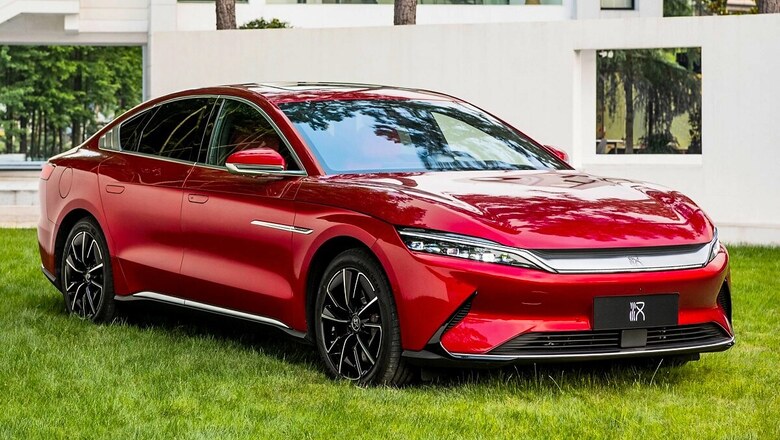
views
Electric car technology has improved massively over the years and the widespread acceptance of electric vehicles (EV) as the future of transportation is an indication towards the belief in this technology – by consumers, automakers and investors alike. But that is not to say that battery technology has reached its peak, in fact, it is far from it as there is still a lot of trials and errors being made by several companies, big and small, all across the world. As a result, we are also witnessing innovations in battery developments as automakers rush to make use of the subsidies being offered by different governments and to mark their territory in the future of automobiles.
One such example can be seen by China’s largest electric vehicle maker BYD. Like Tesla, BYD’s shares have skyrocketed and its Hong-Kong-listed stock price has nearly tripled this year. And as per a report by WSJ, this has been happening due to investors getting excited over BYD’s new “blade battery”.
The report goes on to state that the battery, which was announced earlier this year in January, is cheaper and safer than many EV batteries being used today as it does not make use of costly cobalt and is instead, a type of lithium iron phosphate (LFP) battery. This LFP technology isn’t new as it has been around in China for a long time where it has been used for cheaper cars or electric buses that travel over similar distances regularly. It worked in this scenario as the LFP battery has a low energy density and hence, has a lower range for EVs.
Now, however, thanks to the advancements made in battery architecture improving its energy density, the LFP battery is being seen as something that can witness a wider application across automobiles. The report goes on to add that Tesla is using LFP batteries too for its Shanghai-made Model 3 sedan that is being sourced from Chinese maker Contemporary Amperex Technology (CATL). The report also cites S&P Global Platts that states that LFP-based designs accounted for 45.6 per cent of the total battery output in China for the month of July, which was up by 24.5 per cent when compared to the same period last year.
Also Watch:
Another boost towards LFP-based battery is the Chinese subsidy policy. It had been preferring electric vehicles with longer range and as a result, the LFP-based battery wasn’t the preferred choice. But the most recent policy on subsidies – that is much lower and available only for vehicles that cost less than 3,00,000 yuan ($44,000) – means that LFP batteries are being opted by automakers once again.
As per the report, currently, BYD’s “blade battery” is only for internal use which helps in lowering costs and boosting margins. But there are hopes of it being sold externally as well given that BYD has a joint venture with Toyota in China.
So without a doubt, BYD’s battery holds a lot of promise but it also faces tough competition from rivals like CATL which is in possession of similar new and improved LFP technology as well. We have to wait and see where this takes the global EV industry but if history is any indication, competition always, in the end, benefits the end consumer the most.




















Comments
0 comment